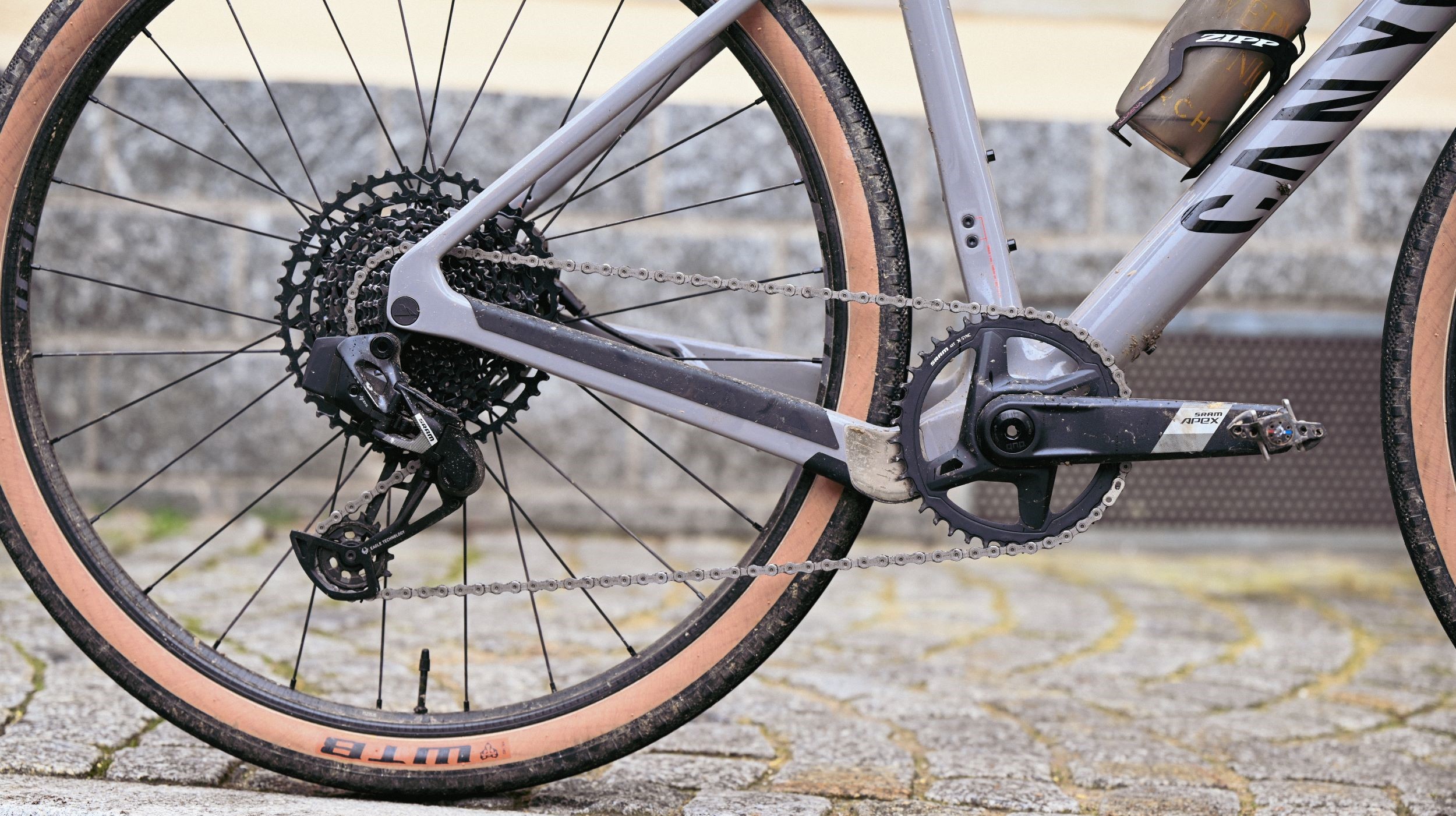
All bikes with the exception of penny-farthings are geared between the crankset and the rear wheel. Most bikes will include a range of gears, so that you can choose one appropriate to where you’re riding – a lower, easier gear for climbing a hill and a higher, harder one for riding on the flat or downhill.
So far, so simple, but things rapidly get more complicated when you consider how gears work and the different systems available. It’s even more complex when you take into account compatibility (or lack thereof) between different brands.
Gears form part of a groupset, which also includes brakes and brake levers. Brands will sell a hierarchy of groupsets, with more money in general buying you a greater number of gears, better designs and lower weight.
In this guide, we’ll go through how different gear systems work, how to operate them, as well as providing a brief overview of how to maintain your bike's gears and when parts might need replacing.
Derailleur gears
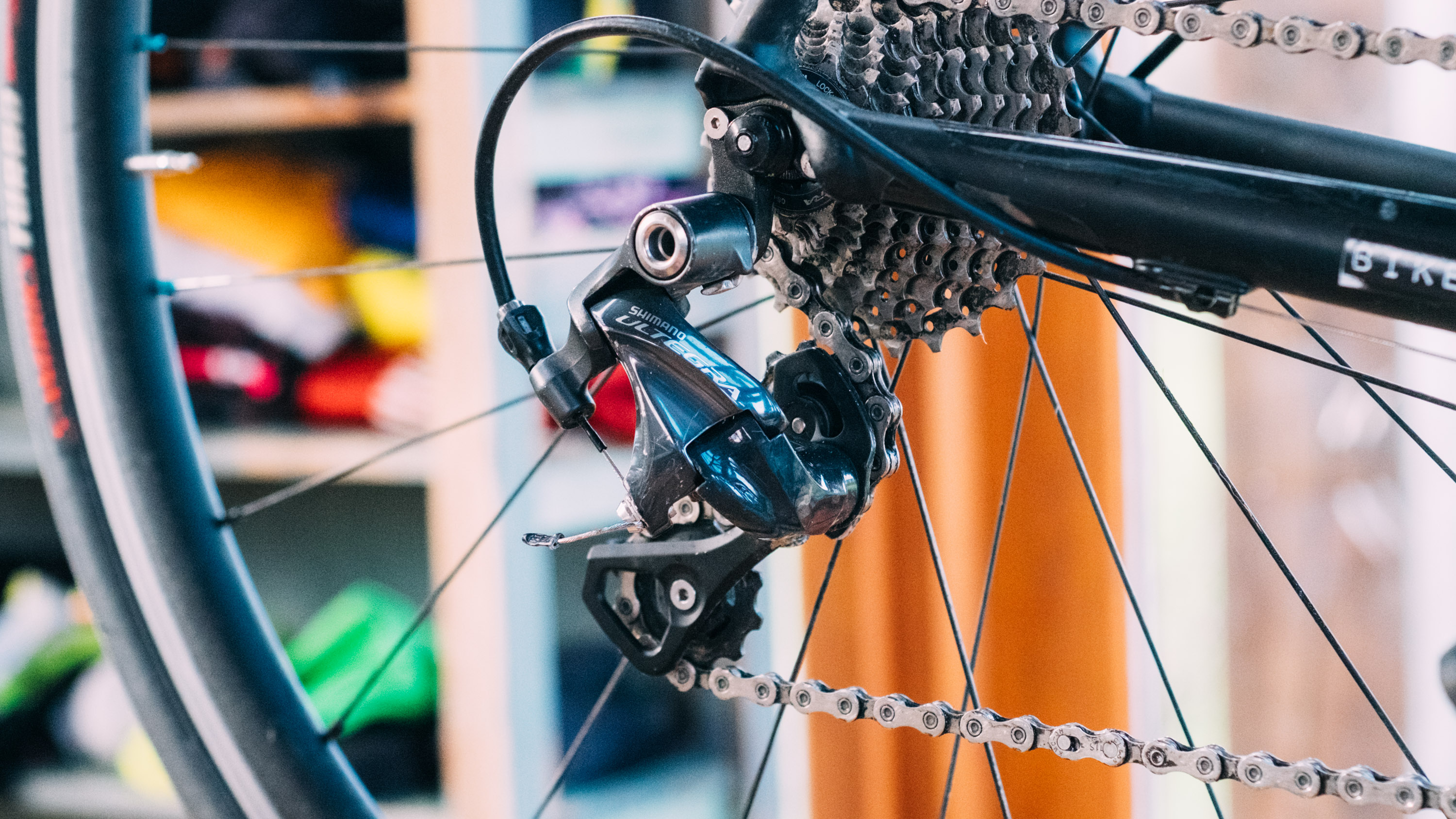
The majority of bikes use a derailleur gear system. This comprises a series of sprockets with a range of sizes attached to the rear hub, which form a cluster called a cassette. In modern systems, the freewheel system is built into the wheel but in lower spec or older bikes it forms part of the gear cluster.
The bike’s chain runs through a rear derailleur which hangs below the rear axle and moves laterally across the cassette in response to the rider’s input. As the derailleur pushes the chain to the side, this derails from its current sprocket and skips to a larger or smaller one.
The derailleur has a sprung mechanism which holds of a pair of jockey wheels and keeps the chain taut regardless of which sprocket has been chosen. The sprockets are typically engineered with small ramps and clever tooth profiles that promote fast, smooth shifting.
Changing between sprockets changes the gear ratio, the number of turns that the rear wheel makes for every turn of the cranks. Shifting to a larger sprocket makes riding easier, while shifting to a smaller sprocket makes it harder.
The cassette may include anything between seven and 13 sprockets, depending on the groupset model.
In addition to the rear derailleur, many bikes have a front derailleur and include two or three different size chainrings, although single chainring set-ups (often called one-by or 1x) are common on mountain bikes. They’re also found on many commuter bikes and gravel bikes and occasionally on road bikes.
Although the chain is not permanently engaged with the front derailleur, this works in a similar fashion to the rear derailleur, pushing the chain between chainrings when the rider initiates a front gear change.
What does 'speeds' mean?
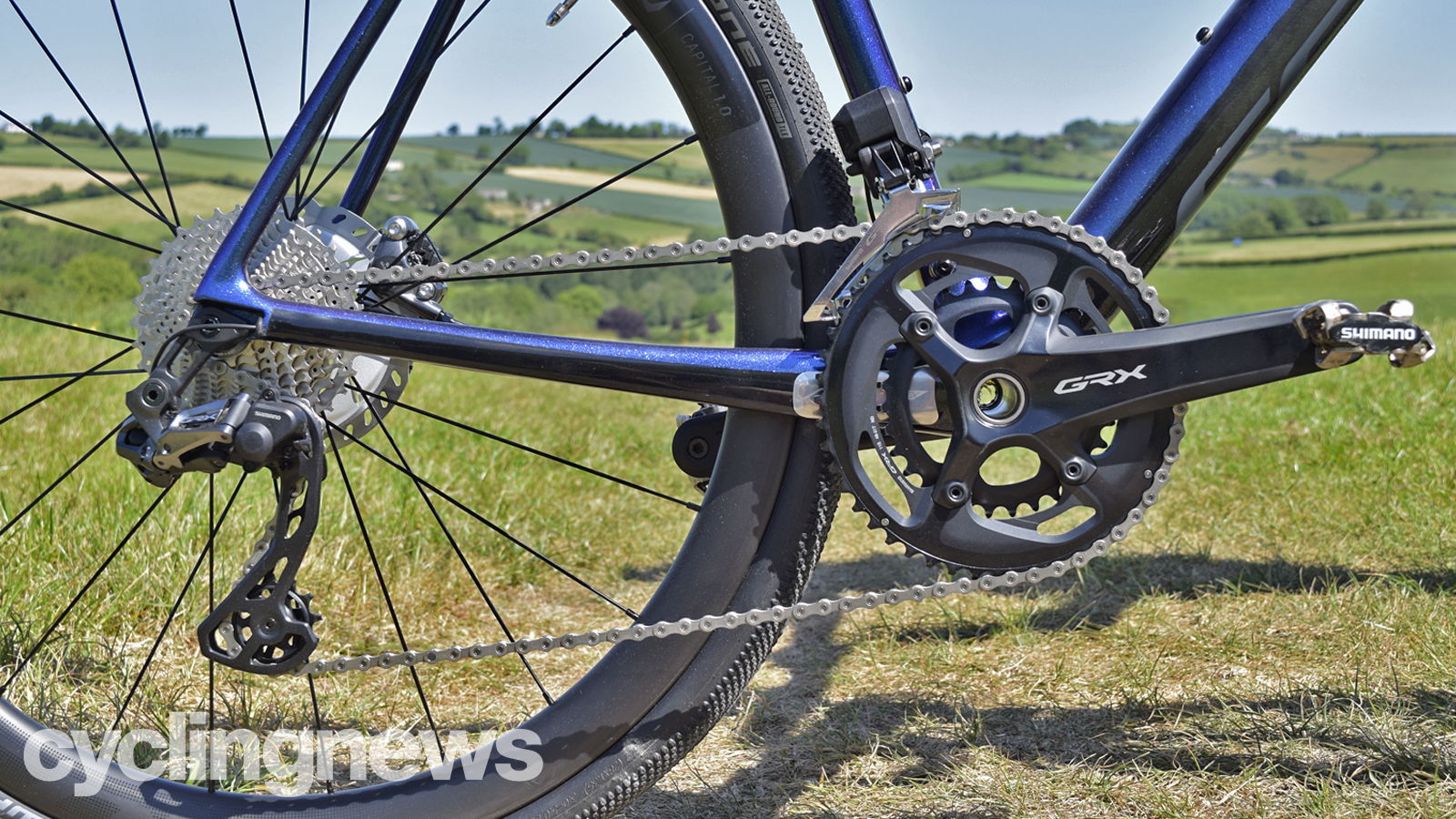
You’ll often see ‘speeds’ mentioned when reading about bike groupsets. This refers to the number of sprockets in the cassette, meaning an 11-speed groupset will have 11 sprockets. However, the actual number of discrete gears available in groupsets with two chainrings a the front is double this, while it’s three times the number of speeds with a triple chainset.
In reality, there’s usually significant overlap between gear ratios when using the different chainrings, so the number of actually-useful different gear ratios will be lower than this.
Extreme cross-chaining between the largest chainring and largest sprocket or smallest chainring and smallest sprocket may not be efficient and may result in more rapid chain wear and so should be avoided, further reducing the number of gear combinations available.
Single-speed gearing
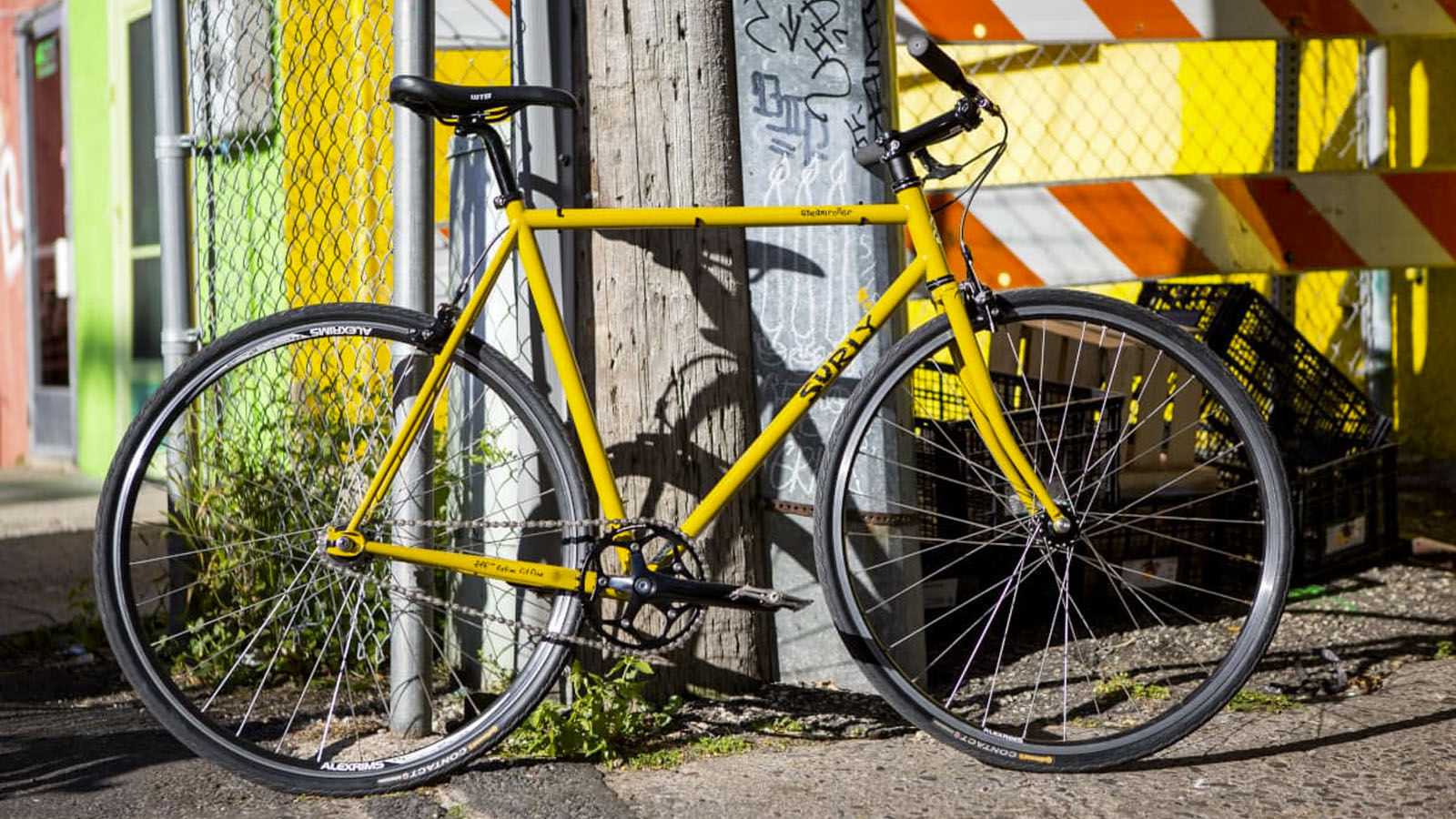
Not all bikes have multiple gear ratios; some have single-speed gears, where the chain connects a single chainring to a single sprocket at the rear.
In some cases, the sprocket may incorporate a freewheel mechanism, letting you stop pedalling while the bike still rolls forward, while in others it’s fixed rigidly to the rear wheel, so that when the bike is moving you have to keep pedalling.
Single-speed gearing with a freewheel is often found on children’s bikes and popular on town bikes. Track bikes meanwhile have fixed gearing, as do some ‘fixie’ hybrid bikes for urban use.
A variant on chain-driven single-speed gearing is a belt drive, of which the Gates Carbon Drive is the most commonly used. This uses a toothed carbon fibre belt to transfer power to the rear wheel and has the advantage of being virtually maintenance-free and silent, although it can’t work with a derailleur gear system.
Hub gears
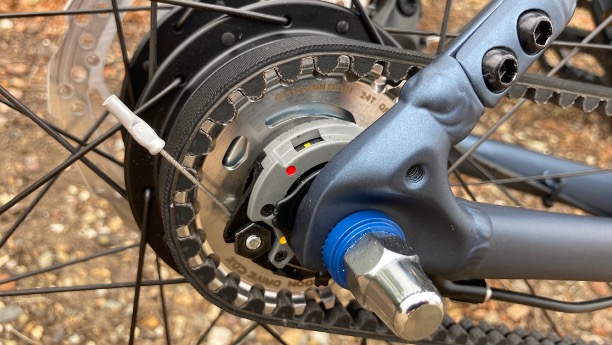
A single-speed external drivetrain may be paired with a hub gear system. Here, the bike’s gears are fully enclosed within the rear hub and may offer anything between two and 14 gear ratios. Hub gears have the benefit of low maintenance and protection from bashes and damage, but are in general heavier than equivalent derailleur systems.
Hub gears use planetary gear systems, like those used in many cars with automatic gearboxes. The gears inside the hub are permanently engaged, so you can shift when stationary, unlike a derailleur system. While most hub gears provide discrete ratios, some gear hubs offer continuously variable gearing with no steps between gears, such as Enviolo and Pinion.
Gear selection
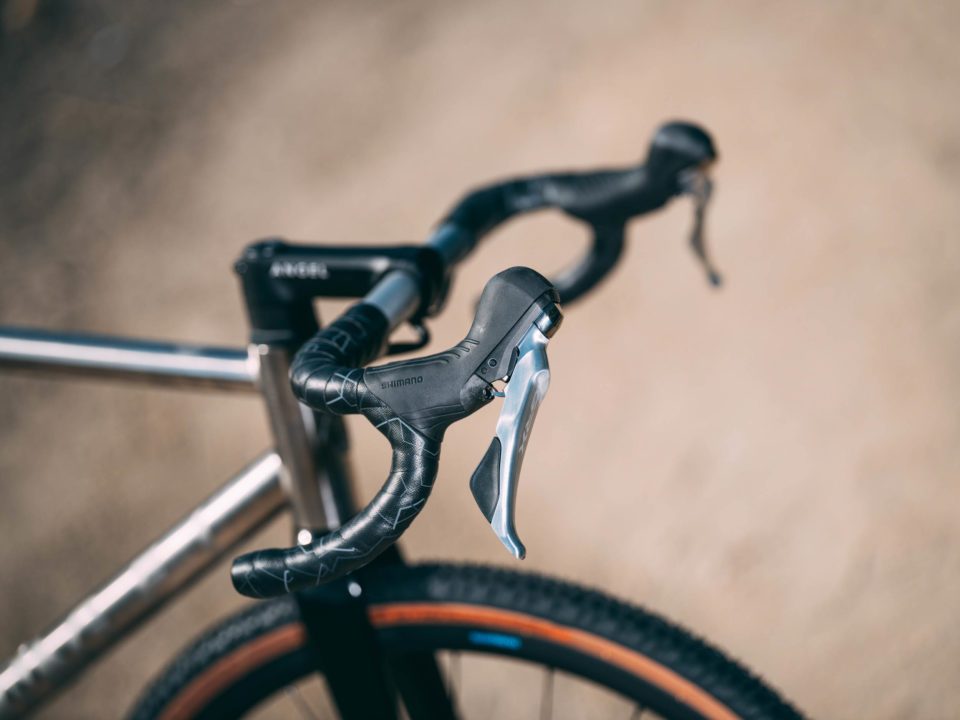
In the vast majority of systems, the rider selects their gear using levers mounted on the handlebars, although in the past road bike gear shifters were fixed to the bike’s down tube. Interestingly, for electric city and e-mountain bike use, Shimano makes an automatic gear system, which will select the gear for you without intervention.
Flat bar bike gear shifters are separate from the brake levers, although usually mounted close to them. Some flat bar bikes incorporate the shifting mechanism into the bike’s hand grips, with shifting initiated by twisting the grip.
In contrast, drop bar bike gear shifters are usually incorporated into the brake levers to make them easier to use. You can also find bar-end gear shifters for drop bars, although these are a niche item.
Most gear systems now incorporate indexed shifting, which means that the shifters operate in discrete clunks when you shift, allowing precise movement between gears. In contrast, old school down tube shifters were continuously variable, so you had to fine-tune the derailleur position once you’d shifted.
Mechanical and electronic shifting
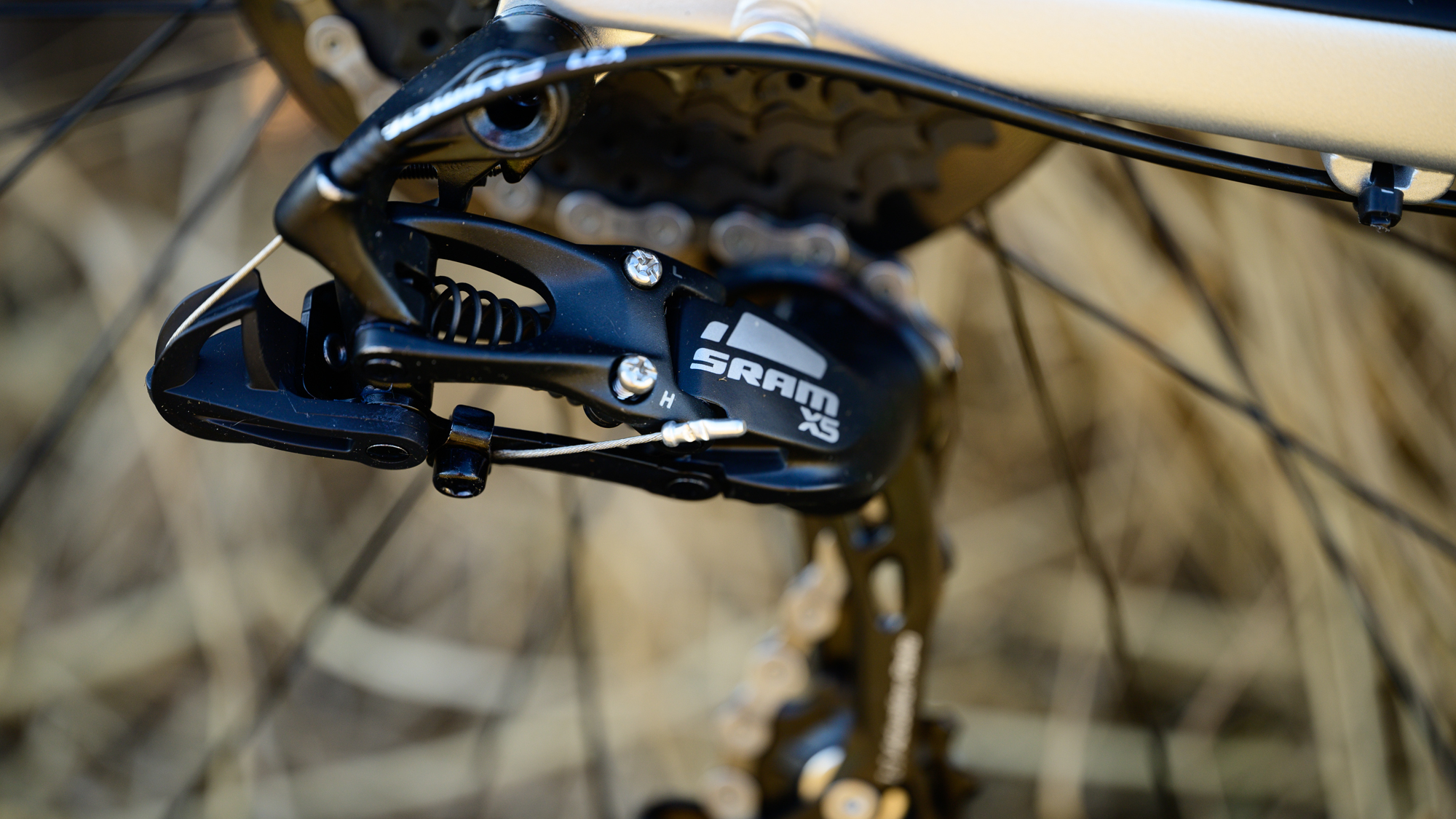
In the vast majority of gear systems, a braided wire cable, running through or outside the bike’s frame tubing, physically connects the bike’s shifters to the shifting mechanism. The cable is enclosed within an outer cable housing, which may enclose the full length of the gear cable, although on some bikes the cabling may include sections that are partly bare.
Mechanical shifting systems are simple, although they can be prone to contamination, fraying or breakage and need to be kept clean and lubricated to work efficiently. Cables also stretch, so periodic adjustment may be necessary.
A more recent development for high-end groupsets is the move to electronic shifting. Here, the signal is transmitted from the shifter to the derailleur electronically. In Shimano and some other systems, a central battery within the bike’s frame powers a motor in each derailleur to shift gears. SRAM and the latest Campagnolo electronic shifting systems, in contrast, have a small proprietary battery attached to each derailleur.
The first electronic shift systems from Shimano and Campagnolo had physical electric wires connecting the shifters on the handlebars to the derailleurs (and in the case of Shimano, its electronic hub gears were wired as well), but the most recent systems use wireless signal transmission. Coin cell batteries in the shifters power their electronics. SRAM electronic systems have always used wireless signalling.
Initially the preserve of the most expensive groupsets, electronic shifting is progressively trickling down to lower priced ones. It’s still expensive, but becoming less so.
What are the advantages of electronic systems?
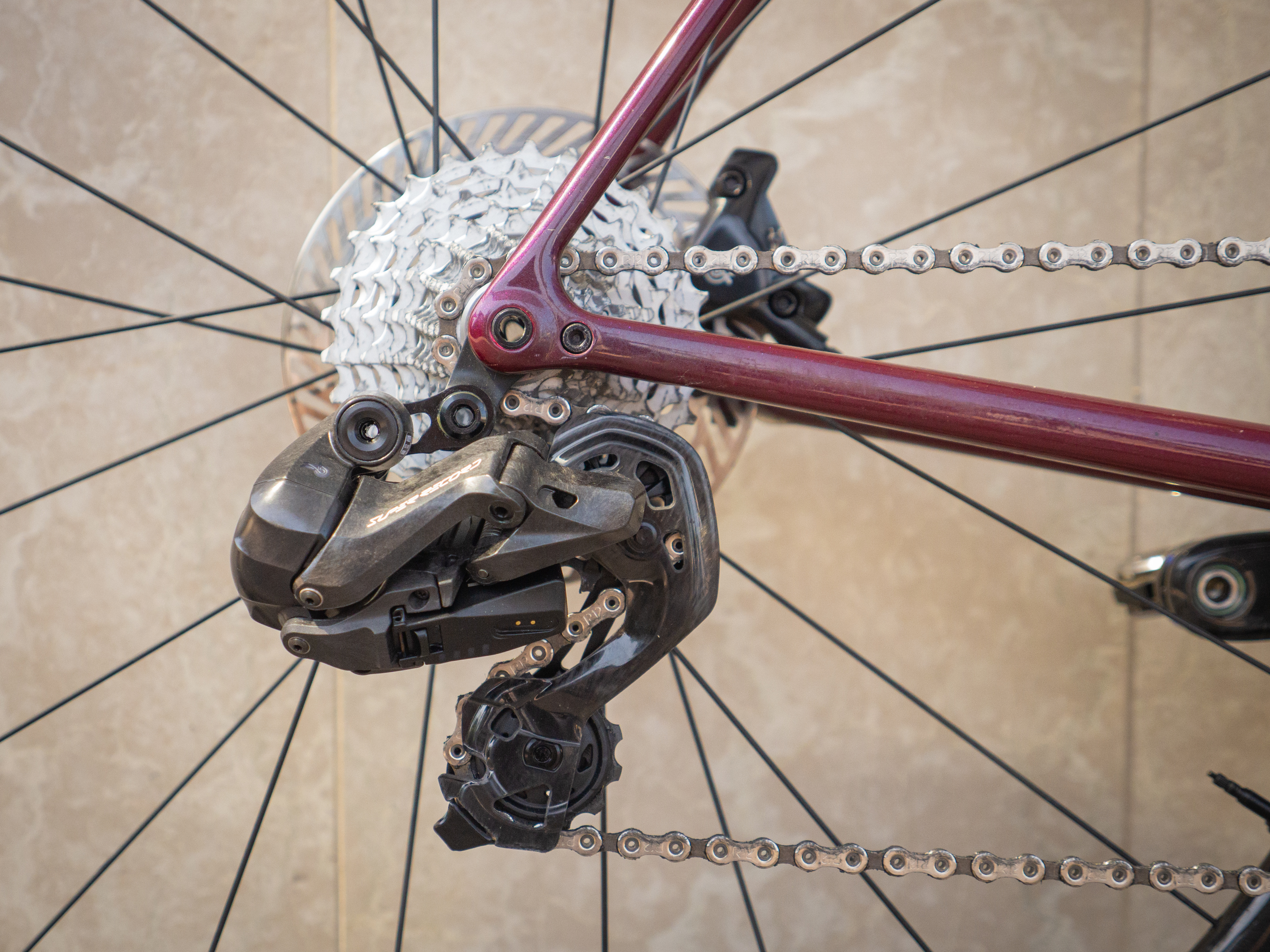
While mechanical systems limit shifting logic to moving up or down the gear range, electronic shifting opens up additional possibilities. For example, a rider can set up sequential shifting, where, in a double chainring system, they only have to choose to shift up or down gears, with the groupset itself initiating a front chainring shift when needed to prevent cross-chaining.
It’s also possible to set up the derailleurs so that the rear derailleur shifts a couple of sprockets up or down the cassette automatically when the rider chooses to change chainrings. This avoids the tendency for the rider to find themselves either spinning too quickly or grinding too slowly after a front shift.
Electronic systems can even transmit gear information to a cycling computer and you can set up small satellite shifters so that, on a drop bar bike, you can shift from the drops or the tops, as well as the shift levers. They can be adjusted with the help of a smartphone app, and provide gear use statistics too. They can even be completely reprogrammed if you want each button to work differently.
The downside of electronic shifting is the need to ensure that batteries are kept topped up, although they need recharging fairly infrequently. If they do go flat during a ride, they are designed to reduce available gear changes gracefully, so that you’d be unlucky to be left with a single-speed bike.
Bike gear maintenance
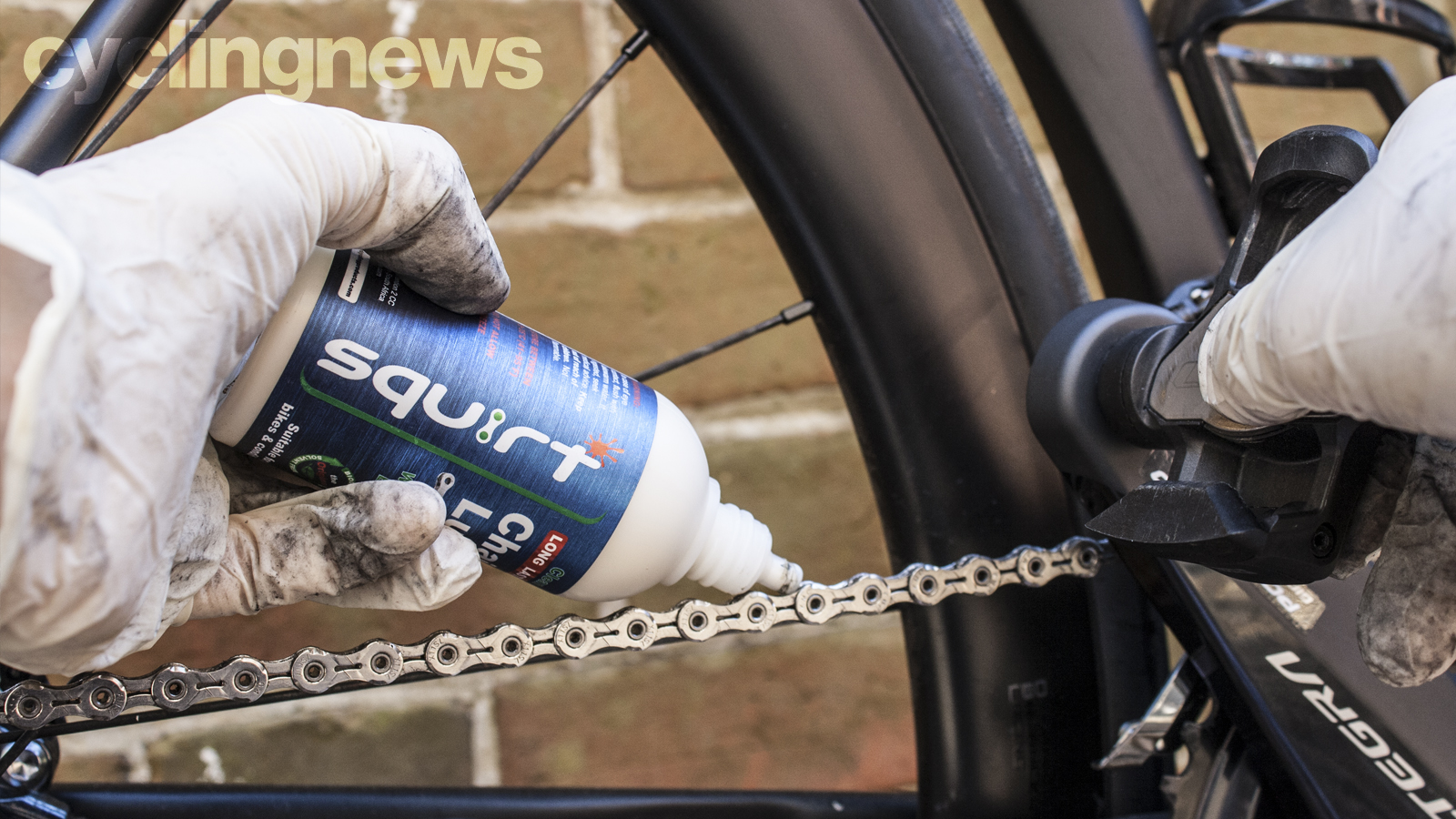
Bike gears are, to a greater or lesser extent, exposed to the elements, even in single-speed systems. The sprockets, derailleurs and chain get dirty and chains are prone to rust when they get damp.
It’s important to keep gear systems lubricated using an appropriate bike chain lube, and to clean your chain periodically to keep everything working effectively. In a mechanical system, also keep the cables lubricated and replace them if there are signs of fraying.
Cables are particularly prone to damage inside the shift levers, where they are forced to wind through tight angles.
When should I replace my bike gears?
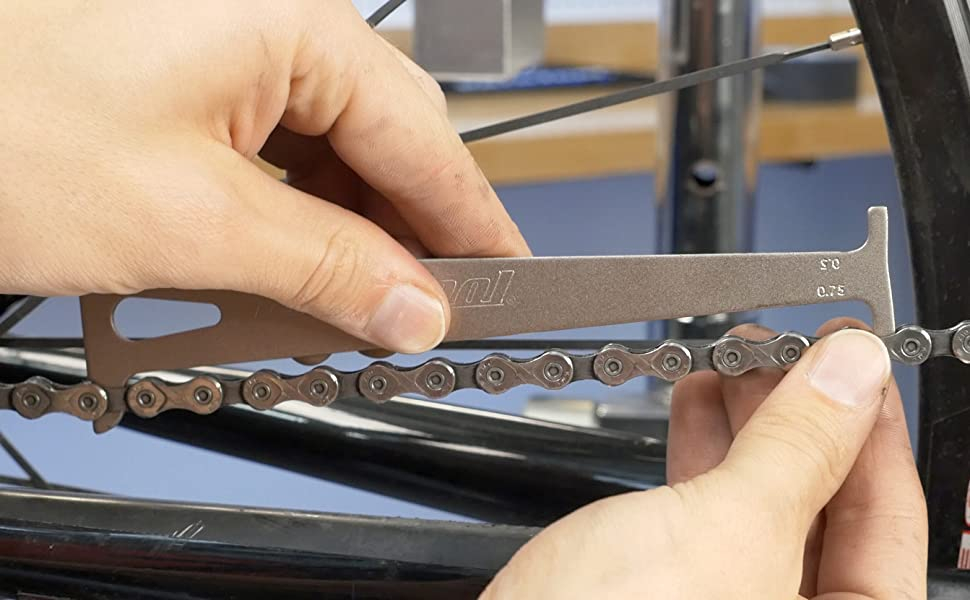
The first part to wear out is usually the chain, which will stretch with use. You can buy a chain wear checker or get a shop to check it. Chains typically need replacing when they reach 0.75% of stretch, as shown on the chain checker tool.
Chain wear can lead to poor shifting, which isn’t crisp. It also wears your rear sprockets and, at a slower rate, the teeth in your chainrings. It’s usual to replace your cassette at the same time as your chain to restore smooth shifting.
You may also experience poor shifting due to cable stretch and wear or contamination and need to replace these.
Derailleur mechanisms often need to be fine-tuned, either by using the derailleur’s barrel adjuster to ensure that the derailleur is correctly positioned below each sprocket, or by adjusting the derailleur limit screws if the chain is failing to engage with the smallest or largest sprocket, or falling off either end of the cassette.
Yet another cause of poor shifting is derailleur hanger mis-alignment, which usually needs to be sorted by a shop, which will have the tools needed.
Replacing your gear components
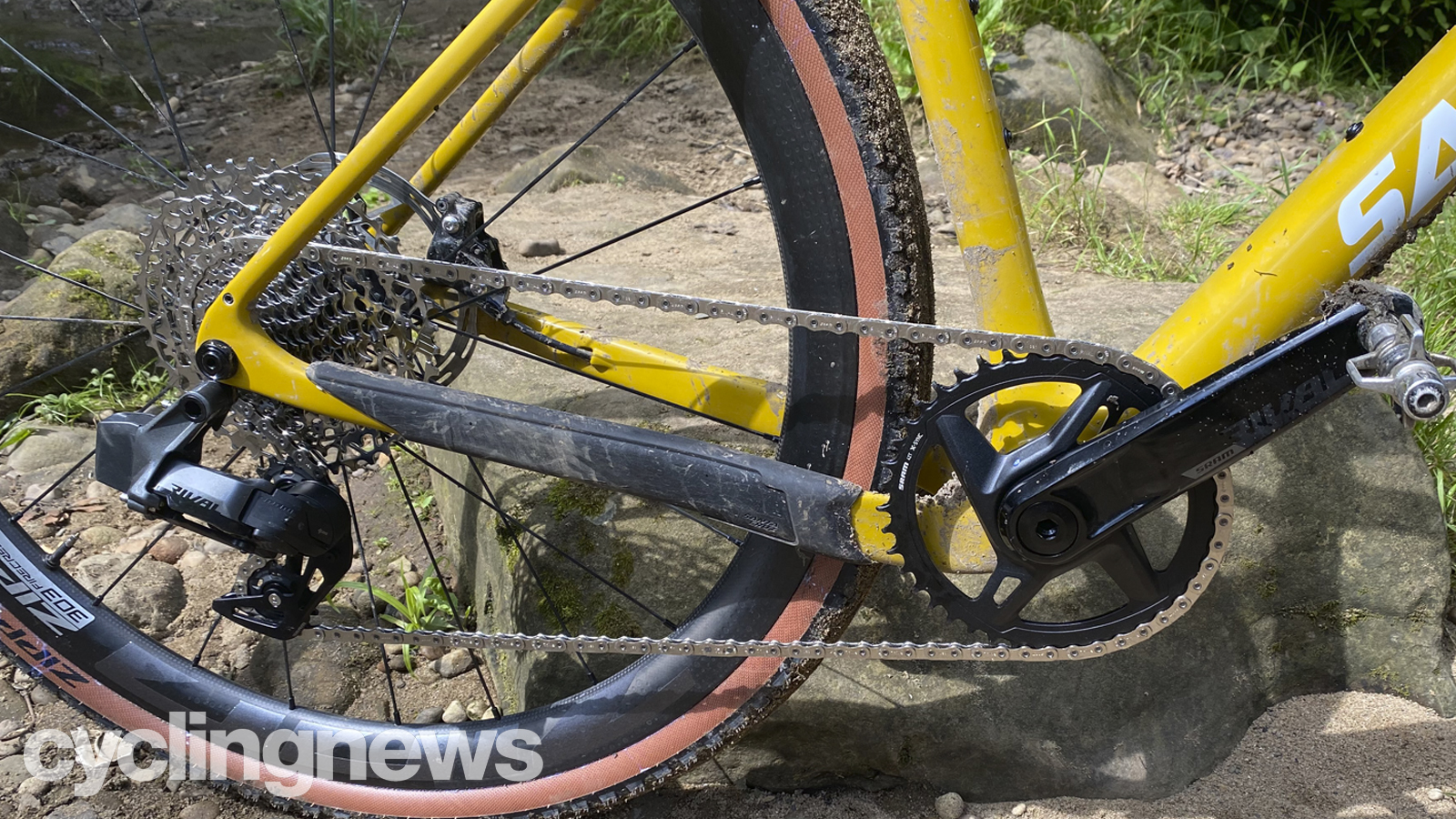
Unless you replace like with like, any gear system component replacement quickly runs into compatibility issues.
First up, the speeds need to match: you can’t use an 11-speed cassette with a ten speed system, for example. You can usually swap out items between different levels in a groupset hierarchy though, if they have the same number of speeds. Such as SRAM Force and Red, or Shimano 105 and Ultegra.
Derailleurs also have a maximum range, so you can’t, for example, fit an 11-42 tooth cassette to a double chainring system, only one designed specifically for single chainrings. Much road bike gearing is incompatible with mountain bike components and vice versa.
With mechanical systems, there’s limited compatibility across groupset brands too. SRAM shifters won’t work with Shimano derailleurs for example, although you can use either brand’s cassette and chain or third party equivalents if they have 11 speeds or fewer.
And finally, top end electronic systems are even less compatible across brands. Again, there’s usually the option to swap within a groupset hierarchy should you wish. So, for example, you could use a SRAM Rival 12-speed cassette in your SRAM Red system or a 12-speed Ultegra component with 12-speed Dura-Ace.
Hopefully that's helped to answer your questions and gear queries, but drop us a comment below if you're still unsure. Otherwise, get out there and put your newfound knowledge to good use.







